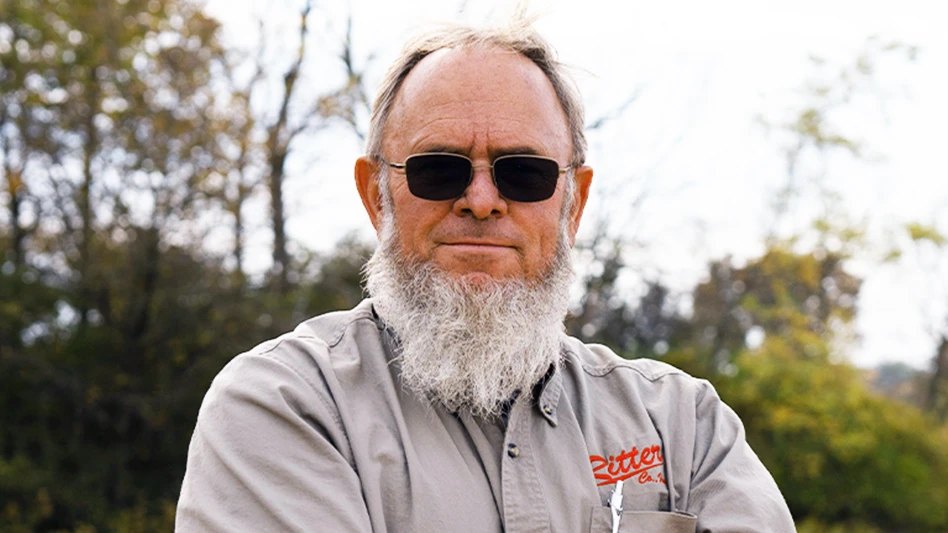
Photo provided by Rockster Austria International GmbH.
In early 2020, Starnberg, Germany-based Anton Sedlmaier GmbH decided to purchase the 30-metric-ton impact crusher R1000S from Rockster Austria International GmbH, with an eye on an upcoming large-scale project in the center of Tutzing, Germany, where a six-story commercial building would be razed to the ground.
Sedlmaier, a 50-year-old demolition and earthwork company with 30 employees, was hired by the Ehret & Klein planning office to help demolish and recycle the former Roche Group building in the center of Tutzing.
Pharmaceutical firm Boehringer, which was acquired by the Switzerland-based Roche Group in the late 1990s, used to operate from several buildings in Tutzing, but operations moved from there in 2002. In 2019, the demolition of the last building was ordered, with plans calling for new construction, including a health clinic, to replace it.
An estimate of the demolition project calculated some 25,000 cubic meters (32,700 cubic yards) of materials would result from the dismantling and demolition process.
For previous projects, Sedlmaier rented mobile crushers to process concrete and other materials. The purchase of the Rockster R1000S with hydrostatic drive and an inlet opening of 960 millimeters (mm) by 720 mm (3 feet by 2 feet, 4 inches) was an important step forward, says the firm.
“Our machine operators are enthusiastic about the new mobile crusher,” says Sedlmaier Site Manager Markus Falschlunger. “They praise the easy handling and the good accessibility for maintenance work. We are now much more flexible and efficient in processing demolition debris and natural stone.”
The Roche processing project has been a test of toughness for the crusher, according to Falschlunger, who has been involved in the project for one year. “The challenge at this construction site is, on one hand, the strong reinforcement of the concrete; a lot of iron was used in the construction of the building. On the other hand, we are right in the center of Tutzing, where we have to keep the noise level as low as possible.”
The standard and height-adjustable magnetic separator of the R1000S crusher has proven a valuable aid in the removal of steel and iron, says the firm. Also, fine, earthy material can be ejected with a hydraulically foldable side belt. “We mainly produce 0-50 mm (two-inch minus) final product, which is used for the substructure,” says Falschlunger. “Because the proportion of coarse and fine material is optimal, the recycled concrete is well suited for road construction, since it forms a solid foundation.”
Machine operator Tobias Poschinger praises the fully hydraulic crushing gap adjustment of the R1000S. “I can easily set the crushing gap on the display—it is quick and uncomplicated. I also think it’s great that almost all the functions of the crusher can be controlled via remote control.” He adds, “The performance with this highly iron-reinforced concrete is very good.”
Sedlmaier credits Schlei & Birkert Aufbereitungungsanlagen Service GmbH, a Rockster dealer for southern Germany, for customer after sales support that has played a role in avoiding extensive downtime. “We can really turn to Schlei and his people at any time for questions and get competent information and support immediately,” says Falschlunger. “The training was excellent, and the delivery of spare parts also works perfectly.”
When the crusher is not needed in Tutzing, it is transported to one of the two company-owned gravel quarries. Says Sandor Schlei of the Rockster dealership, “With the Rockster R1000S, our customer has purchased a very sophisticated machine. Whether for his recycling projects or in his gravel works, he can easily transport the crusher and use it an extremely versatile fashion.”
Latest from Construction & Demolition Recycling
- Bomag to showcase innovations on the National Mall
- NWRA, SWANA to partner on safety, education and advocacy
- Caterpillar announces collision warning system, other technology for medium wheel loaders
- ABC: Nonresidential construction adds jobs in April despite headwinds
- Demolition underway at former SC steel mill
- Turkey neglects US scrap in favor of Russian shipments
- Results of New Hampshire waste study reveal missed opportunities for diversion
- Alterra, Eco Materials open soil remediation facility in PA





